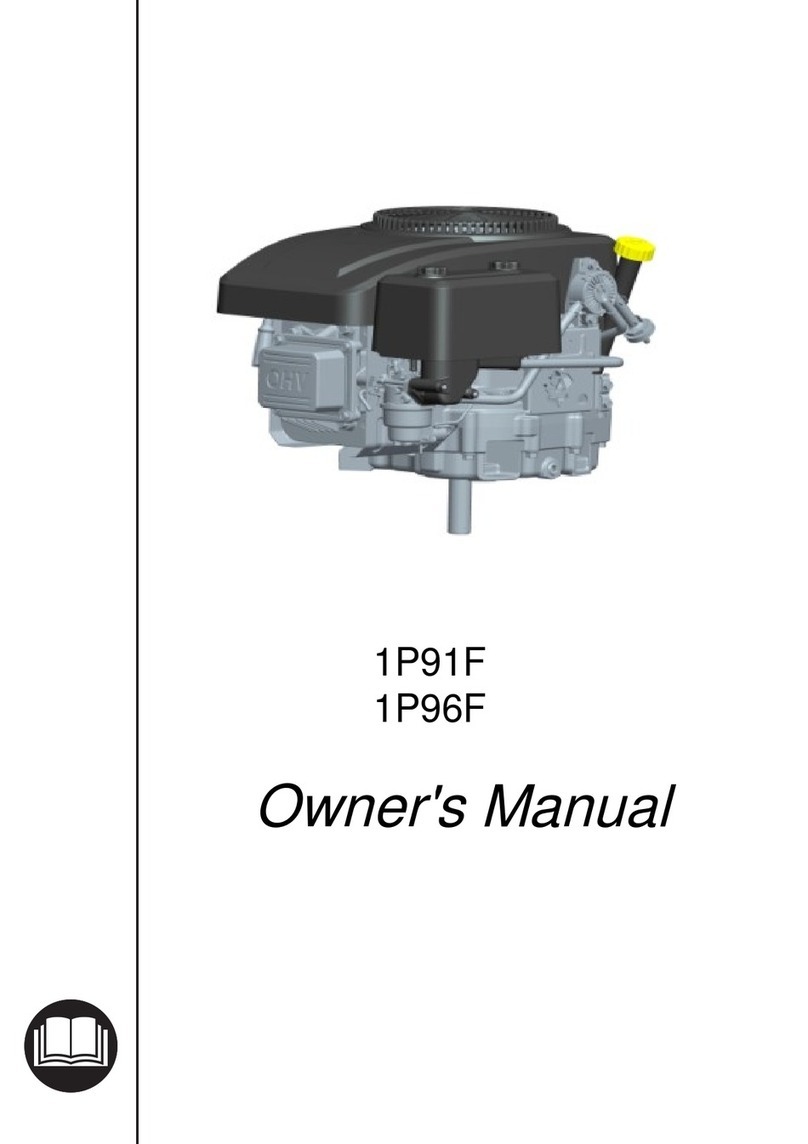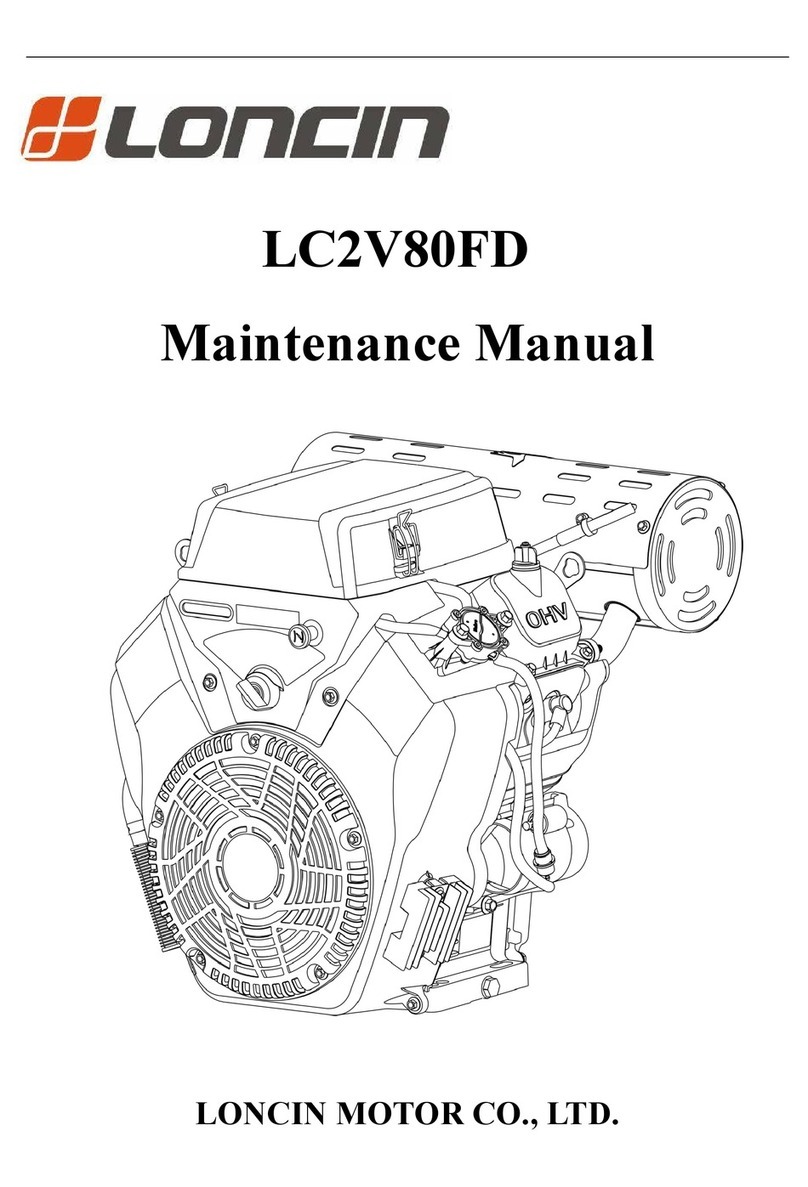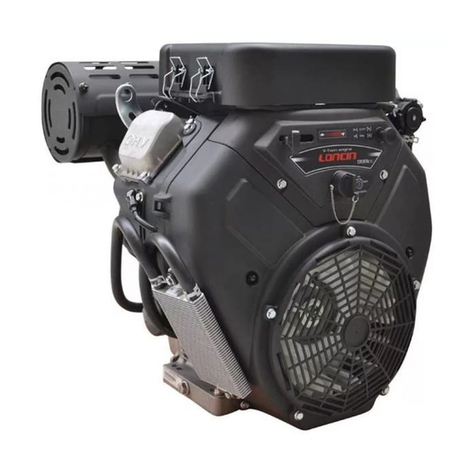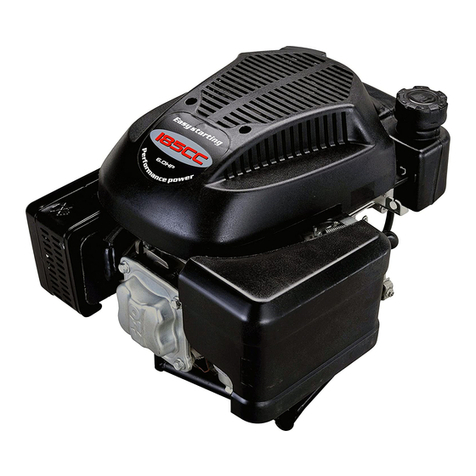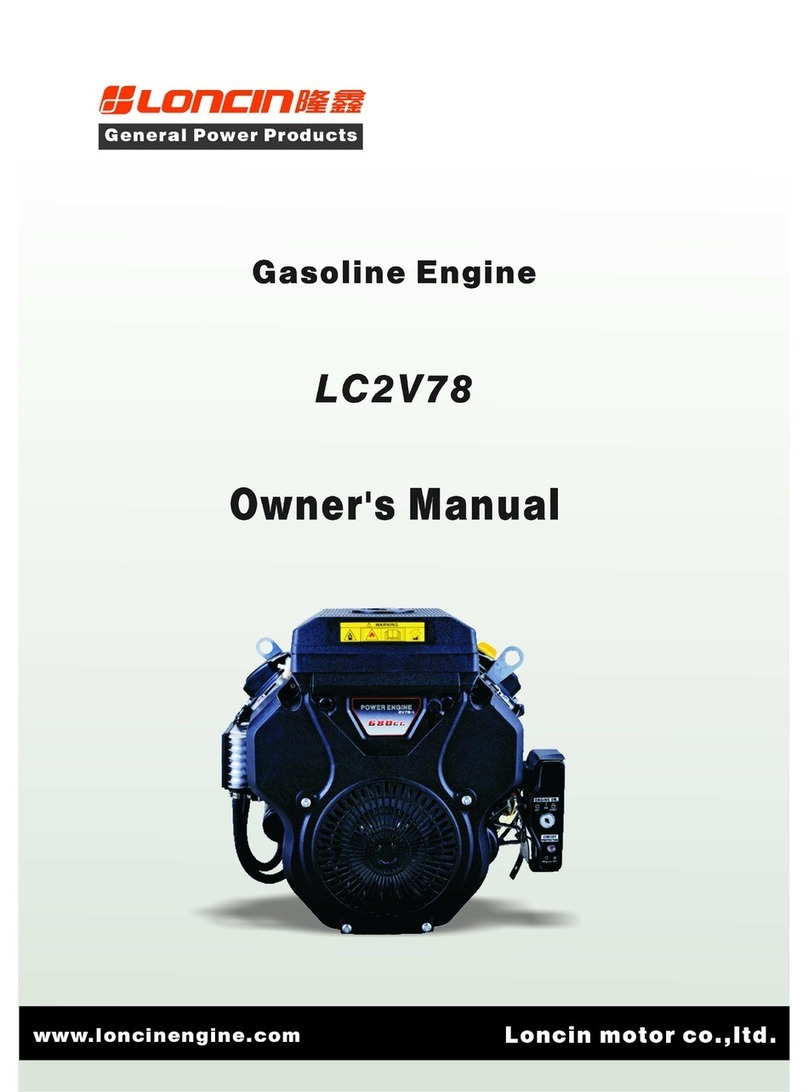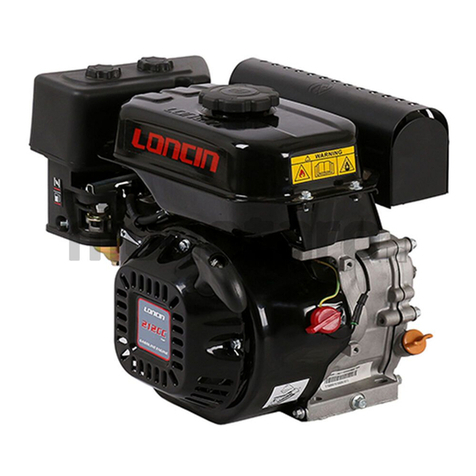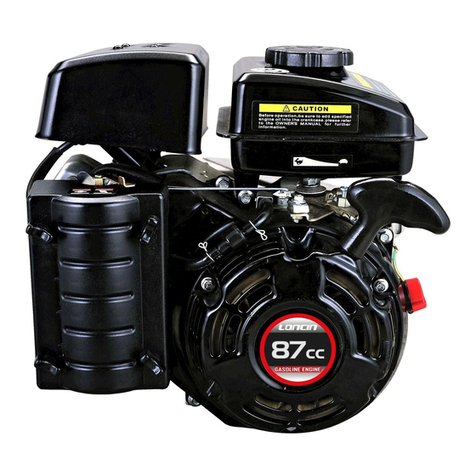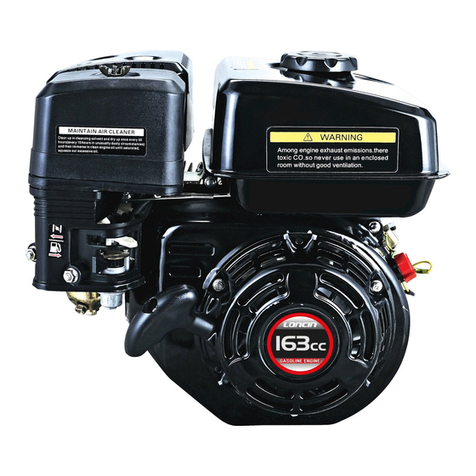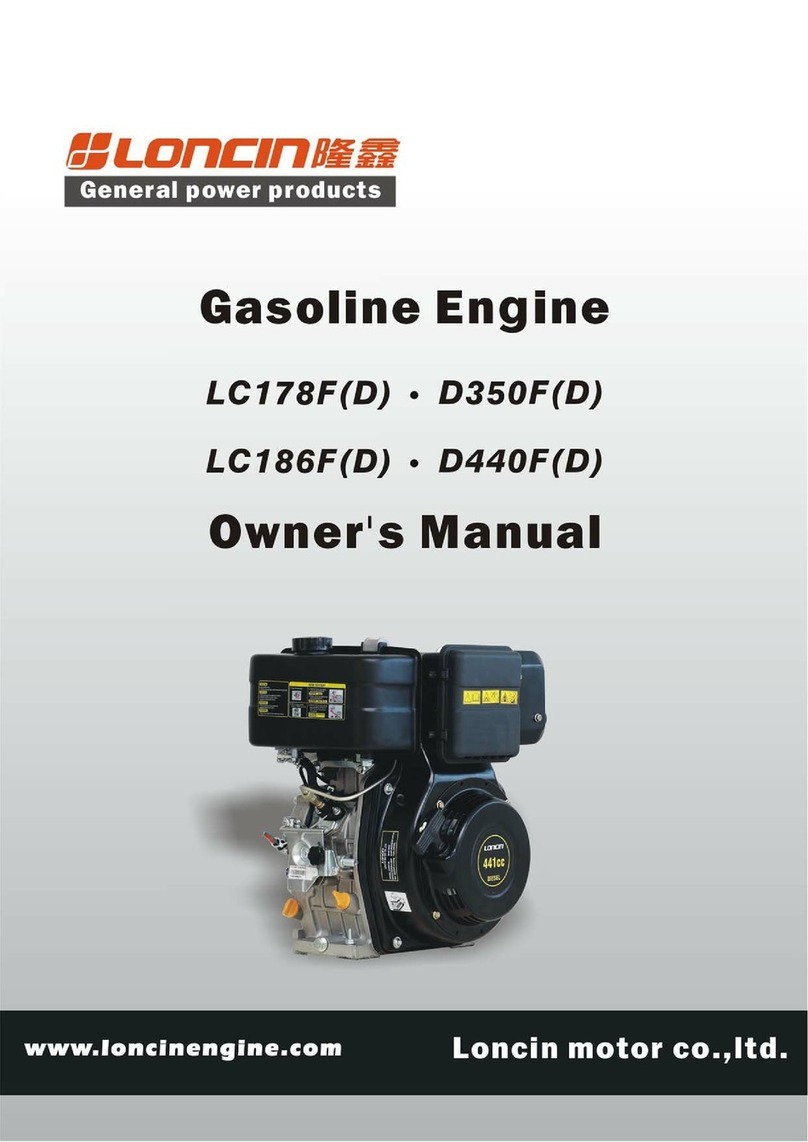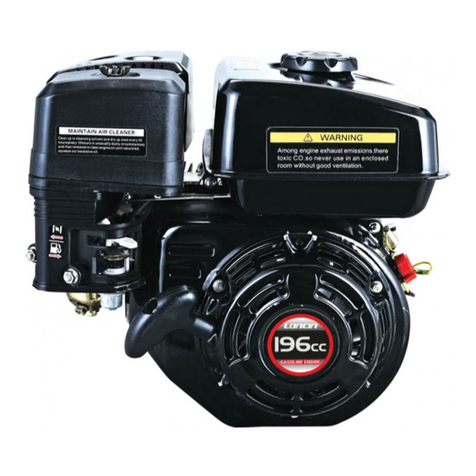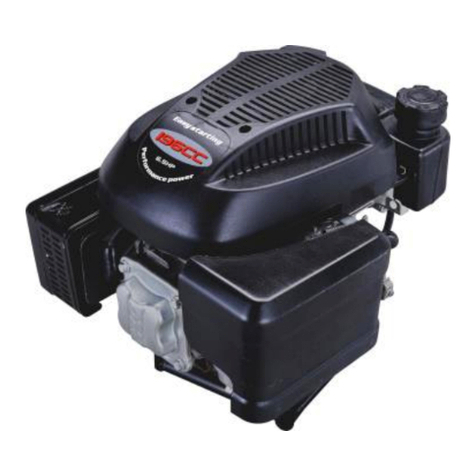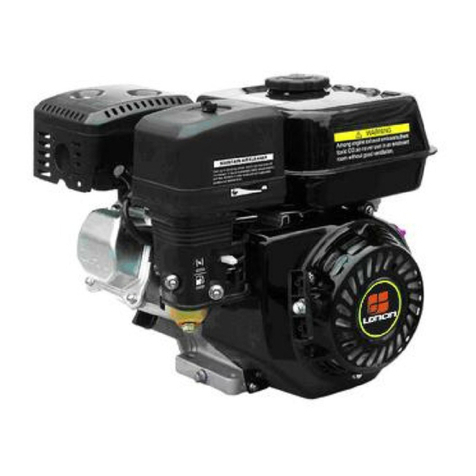
their gap is correct.
debris and in perfect working order.
Oil should be at “MAX” mark do not overfill.
Overfilling with oil may cause:
The engine performance, reliability and life are
influenced by many factors, some external and
some strictly associated with the quality of the
products used and with the scheduled mainte-
nance.
The following information allow a better under-
standing and use of your engine.
ENVIRONMENTAL CONDITIONS
The operation of a four-stroke endothermic
engine is affected by:
a) Temperature:
–Working in low temperatures could lead to a
difficult cold starting.
–Working in very high temperatures could lead
to a difficult hot starting due to the evapora-
tion of the fuel either in the carburetor float
chamber or in the pump.
–In any case, the right kind of oil must be used,
according to the operating temperatures.
b) Altitude:
–The higher the altitude (above sea level), the
lower the max power developed by an
endothermic engine.
–When there is a considerable increase in alti-
tude, the load on the machine should be
reduced and particularly heavy work avoided.
FUEL
A good quality fuel is the major issue for the
engine reliability of operation.
a) Use unleaded gasoline, with a minimum of 90
octane.
b) Use clean, fresh fuel; purchase fuel in quanti-
ty that can be used within 30 days, to prevent
gum from forming inside the container or the
tank.
c) Do not use fuel which contains Methanol.
d) Do not add neither oil nor any kind of fuel
additive.
OIL
Use always high quality oils, choosing their vis-
cosity grade according to the operating temper-
ature.
4.3
4.2
4.1
4. WHAT YOU NEED TO KNOW a) Use only detergent oil classified SF-SG.
b) Choose the SAE viscosity grade of oil from
this chart:
– from 5 to 35 °C = SAE 30
–
from -15 to + 5 °C =
5W-30 or 10W-30
(Multi-viscosity)
– from -25 to + 35 °C = Synthetic oils 5W-30
or 10W-30
(Multi-viscosity)
c) The use of multi-viscosity oils in hot temper-
atures will result in higher than normal oil con-
sumption; therefore, check oil level more fre-
quently.
d) Do not mix oils of different brands and fea-
tures.
e) SAE 30 oil, if used below 5°C, could result in
possible engine damage due to inadequate
lubrication.
f)
–Smoking;
–Spark plug or air filter fouling, which will
cause hard starting.
AIR FILTER
The air filter must always be in perfect working
order, to prevent debris and dust from getting
sucked into the engine, reducing the efficiency
and life of the machine.
a) Always keep the filtering element free of
b) If necessary, replace the filtering element with
an original spare part. Incompatible filtering
elements can impair the efficiency and life of
the engine.
c) Never start the engine without mounting the
filtering element properly.
SPARK PLUG
Not all the spark plugs for endothermic engines
are the same!
a) Use only spark plugs of the recommended
type, with the right heat range.
b) Check the length of the thread, because – if
too long – it will damage the engine beyond
repair.
c) Make sure that the electrodes are clean and
4.5
4.4
3
EN
